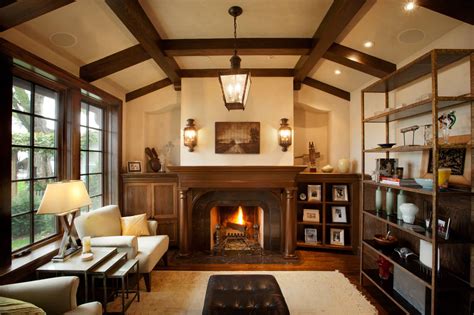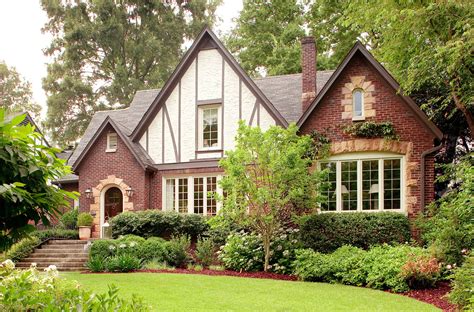what is a tudor house What makes Tudor-style houses truly unique is their rich history. Commencing in England during the Tudor period (1485–1603)(1485-1603), these homes capture the essence . TRANSMAX ATF DEXRON®-VI MERCON® LV Multivehicle is also suitable for use in the majority of 6,7,8 and 9 speed automatics of European cars, meaning it is suitable for use in nearly all passenger car automatic transmissions. It delivers enhanced protection and a smoother drive for longer. Features & Benefits
0 · tudor style house interior characteristics
1 · tudor style house interior
2 · traditional tudor house
3 · how were tudor houses built
4 · examples of tudor style homes
5 · english tudor style house
6 · english tudor style homes
7 · characteristics of tudor houses
Why Spend Your Time at Cafe Casino? More Wins. Whether it's our 350% match Welcome Bonus up to $2,500 on your first deposit or any of our other great promotions and perks, . Cafecasino.lv is operated by Arbol Media B.V. registered under No. 145739 at, Kaya Richard J. Beaujon Z/N, Curaçao. This website is licensed and regulated by Curaçao .
What is a Tudor-style house? Known for pitched gable roofs, decorative wood trim, and old-world appeal, this architectural style was once .The Tudor architectural style is the final development of medieval architecture in England and Wales, during the Tudor period (1485–1603) and even beyond, and also the tentative introduction of Renaissance architecture to Britain. It followed the Late Gothic Perpendicular style and, gradually, it evolved into an aesthetic more consistent with trends already in motion on the continent, evidenced by .
What makes Tudor-style houses truly unique is their rich history. Commencing in England during the Tudor period (1485–1603)(1485-1603), these homes capture the essence .
bolsos louis vuitton segunda mano
Tudor Homes | Architectural Features, Examples, and Facts. Tudor Style Homes: Exploring History, Design, and Modern Influence. Historical Background of Tudor Style Houses. Origins . The Tudor Revival-style home embraces unusual elements, a storybook form, and a touch of rebellion. Here's how to identify a Tudor-style house. The Tudor House & Garden, located in Southampton, England, is a museum initially constructed in the 1490s and has been fully restored to its original glory. The museum features a mix of timber frame and brick . Anthony Masterson. The facade of a Tudor-style home is often dominated by one or more prominent, steeply pitched cross gables. This home features two front gables and brick wall cladding.Brick became the preferred .
There are many Tudor houses in England, some of which are still being lived in today. The town of Lavenham in Suffolk is famous for its Tudor buildings. Many Tudor houses featured a wooden frame (joined together by .
tudor style house interior characteristics
The floorplans of Tudor houses in cities were often a simple square or rectangle with regularly shaped rooms. In the country, some of the houses had an H-shape. The ceilings inside Tudor houses were much lower than those in modern buildings. Tudor House Windows and Doors Typically, the windows and doors in Tudor houses are tall and narrow. Decorating Tips. As an expert designer who is currently designing the interiors of a Tudor-style home in Maryland, Gambrel has a few sage suggestions for decor: “When the house has a superfluous amount of stone, timber, and mason work, I tend to gravitate toward materials that aren’t represented in the home and textures that handle the weight of the architecture.”

Tudor House Materials . Materials and form are what distinguish a Tudor Revival home from other architectural styles. From the onset of the style’s popularity in the United States, the focus was, in part, to be what a Colonial-style house was not. So instead of a wood or asphalt roofing, Tudors employed slate or clay. Tudor-style homes started popping up across the U.S. around the mid-19th century and grew in popularity until World War II. Tudor homes reached their peak in popularity in the 1920s, and by the .
With an asymmetrical facade comprised of overlaying roof gables, Tudor style homes are resplendent in detail. Their signature exterior feature is an exposed structural frame of timber beams, which, in Tudor Revivals, is often purely decorative. Additional characteristics of a Tudor house include: • Decorative timbering.
A Tudor style house is a home built with architectural features which reference Tudor and Medieval architecture. While one might assume that Tudor style homes were built during the 1500s, in fact this term in architecture refers to a specific style which grew popular in the 1800s and persisted through the mid 20th century. During the Tudor era . Modern architecture is known for a slightly industrial feel, a far cry from a Tudor or Colonial-style house. Modern homes feature sharp, clean lines, with many of them incorporating geometric shapes. There are tall, large windows to let in lots of natural light to the open-concept interiors. The glass is one of the few materials used in the .
An American Tudor house is a style of homebuilding with a distinctive look that was once very popular but has fallen on the list of most common house styles due to its higher construction costs. Distinguishing features include the light-colored stucco wall adorned with brown or black wood timbers, a steeply pitched gable roof, and a statement .
The characteristic exterior features of the Tudor style as used in secular architecture are: a lavish use of half-timber work; large groups of rectangular windows; rich oriel, or bay, windows; complex roofs with many gables; interesting and sometimes fantastic chimney treatments; and much brickwork, frequently in patterns. The interiors of secular buildings featured richly wood . Originally, Tudor houses were manors and cottages built in England and Wales between 1485 and 1603, during the reign of the Tudor family. In medieval times, whole trees were hewn into frames for houses and held together using mortise and tenon joinery. The timbers were preserved with black tar and joined together with a white-washed clay called . Pros and Cons of Tudor Houses. There is plenty of appeal to living in a historically inspired Tudor house. Not only is the architecture eye-catching, but the original care taken to the small details of the design can last .
Sutton House. One for Londoners, Sutton House is a large Tudor manor house on Homerton High Street in Hackney, once owned by Thomas Cromwell’s apprentice and Henry VIII’s chief secretary Sir Ralph Sadler. It is . A classic Tudor takes inspiration from medieval residences, which showcased an old-world feel. This style originated at the end of the 15th century, as Englishman began to construct houses with brick and stone – not just .
stilista ysl
Tudor architecture is a transitional style of English architecture that developed during the reign of the royal house of Tudor in the second half of the 16th century, according to Francis D.K. Ching. There are many popular house styles, but let’s shift focus to Tudor houses.Tudor House. When you grew up in an American suburb, you’re most likely aware of the Tudor architectural style, typified by houses with a stucco exterior accented with darkish brown trim and topped with a steeply pitched gabled roof.. What you might not know, nevertheless, is that, charming as they’re, these 20th-century houses are merely “mock” Tudors, or Tudor .The History of Tudor Architecture. Tudor architecture is named for the Tudor period of England, which began with the reign of King Henry VII and lasted from 1485 to 1603. Often a Tudor palace would be accessed through a gatehouse, leading into an outer, or base, court.Hampton Court perhaps has one of the grandest examples, but many other palaces and larger houses have (or had) a similar arrangement. In such cases, as at Hampton Court, expect the buildings surrounding base court to contain additional lodgings for visitors or .

Tudor style houses usually had casement windows grouped in rows of three or more framed in either wood or metal. Double-hung windows were less common. Windows were often divided into six or eight panes and were sometimes made up of rectangles and other times arranged in a diamond pattern. Windows were usually placed symmetrically in the main gable. One look at a Tudor style house and you’re instantly transported to the English countryside. This distinct architecture dates back hundreds of years, borrowing elements of Renaissance and Gothic design, and later experienced a revival in the United States that continued to grow in popularity through the mid-twentieth century.Similar to cottage homes, .
tudor style house interior
traditional tudor house
The Origins of Tudor Architecture. Tudor Period Houses originated in England between the late 15th and early 17th centuries, marking a shift from medieval Gothic structures to more personal, home-oriented spaces. A few things shaped this architectural transition: Key aspects of the Tudor period that shaped this architectural style:The House of Tudor (/ ˈ tj uː d ər / TEW-dər) [1] was an English and Welsh dynasty that held the throne of England from 1485 to 1603. [2] They descended from the Tudors of Penmynydd, a Welsh noble family, and Catherine of Valois.The Tudor monarchs ruled the Kingdom of England and the Lordship of Ireland (later the Kingdom of Ireland) for 118 years with five monarchs: .Characteristics of Tudor Style Houses. Tudor Homes Today: A Guide for Architecture Enthusiasts. 1. Steep Gable Roofs. One of the most visually striking features of Tudor architecture is the steeply pitched gable roof, which is both functional and aesthetically appealing.. Functionality: Steep roofs prevent water buildup by allowing rain and snow to slide off easily, a . A Tudor house is a classic style many homeowners have fallen in love with. Whether you know what a Tudor-style home is or not, you’ve likely seen these storybook abodes at least once or twice. Tudor-style houses provide an air of whimsy and often feel reminiscent of French and English countryside aesthetics.

rolex miami
how were tudor houses built
Castrol® Transmax™ Dexron® VI Mercon® LV is a premium full synthetic transmission fluid, formulated with Smooth Drive Technology™. It delivers outstanding sludge resistance to provide superior transmission life and enhanced friction to resistance to .
what is a tudor house|tudor style house interior characteristics




























